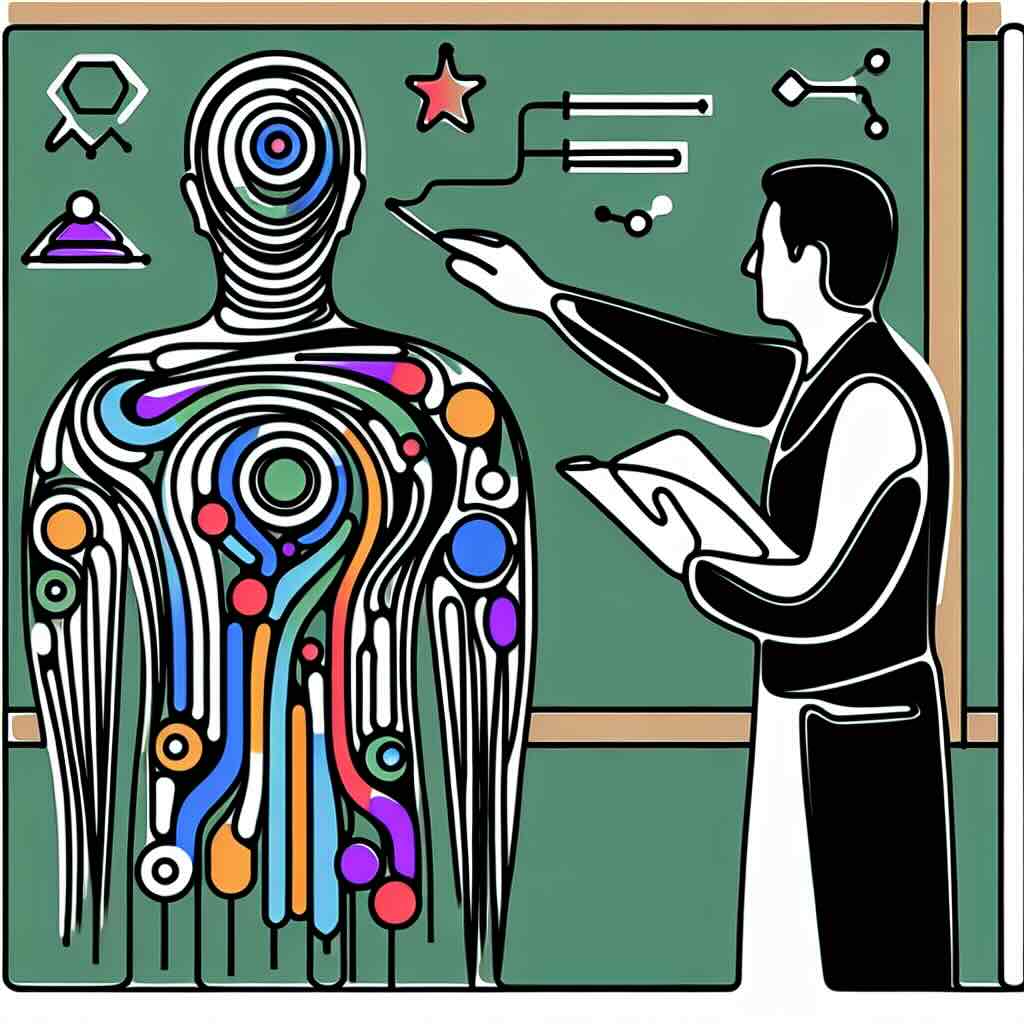A depiction of learning objectives as a connected thread between different activities
Creating high-impact learning objectives is essential for effective instructional design. By adopting a team approach, you can harness diverse perspectives and expertise, ensuring your objectives are comprehensive and focused on learning outcomes. This blog post will guide you through the process, highlight the benefits and risks, and provide actionable steps to implement today
Table of Contents
1. Introduction to High-Impact Learning Objectives
2. Gathering a Multidisciplinary Team
3. Collaborative Objective Development
4. Aligning Objectives with Outcomes
5. Iterative Review and Feedback
6. Benefits
7. Risks
8. One Thing You Can Try Today
9. Conclusion
10. Call to Action
11. Related Topics
Introduction to High-Impact Learning Objectives
High-impact learning objectives serve as the foundation of any effective instructional design project. They define what learners should know, understand, and be able to do by the end of a course. Clear, measurable objectives not only guide the instructional design process but also ensure that your learners will be able to demonstrate the desired learning outcomes. Developing these objectives collaboratively can significantly enhance their quality and relevance.
Gathering a Multidisciplinary Team
Building a team with diverse expertise is crucial. Include subject matter experts, instructional designers, educators, and stakeholders such as learners or industry representatives. Each member brings unique insights, ensuring that the learning objectives are well-rounded and comprehensive. For instance, subject matter experts can verify content accuracy, while instructional designers can ensure pedagogical soundness.
Collaborative Objective Development
Once your team is assembled, initiate a collaborative brainstorming session. Use frameworks like Bloom's Taxonomy to guide your discussions and ensure your objectives cover various cognitive levels, from basic knowledge to complex evaluation and creation. Encouraging open communication and active participation allows team members to contribute their expertise, leading to the development of well-articulated and impactful learning objectives.
Aligning Objectives with Outcomes
Ensure that your learning objectives are directly aligned with the desired learning outcomes. This alignment guarantees that each objective contributes to the learners’ overall growth and success. Use tools like backward design to start with the end goals and work your way back to specific objectives. This approach not only clarifies the learning path but also ensures that each activity and assessment is purposeful and relevant.
Iterative Review and Feedback
The development of learning objectives should be an iterative process. Regularly review the objectives as a team, soliciting feedback and making revisions as necessary. This continuous improvement cycle helps in refining the objectives to better meet learners’ needs. Use formative evaluations—such as piloting the objectives with a small group—to gather real-world feedback and make necessary adjustments before full implementation.
Benefits
1. Comprehensive and Inclusive: A team approach ensures that learning objectives cater to diverse perspectives and needs.
2. Enhanced Expertise: Leveraging the collective knowledge of a multidisciplinary team leads to more accurate and effective learning objectives.
3. Increased Relevance: Objectives are more aligned with real-world expectations and learner needs, resulting in enhanced learning experiences.
Risks
1. Time-Consuming: Collaborative development requires more time than a single individual crafting objectives.
2. Consensus Challenges: Different perspectives can lead to conflicts, making it difficult to reach a unanimous decision.
3. Over-Complexity: Including too many voices might complicate the objectives, making them less clear and harder to measure.
One Thing You Can Try Today
Gather your team for a quick, focused exercise:
1. Identify Where to Create a Learning Outcome: Choose a specific course or module.
2. Brainstorm Objectives: Spend 10 minutes as a group generating possible learning objectives.
3. Refine and Prioritise: Discuss and refine the objectives, and prioritise them based on relevance and impact.
Conclusion
Developing high-impact learning objectives collaboratively ensures comprehensive, relevant, and effective learning experiences. By involving a multidisciplinary team and fostering an iterative review process, you can create objectives that truly enhance learning outcomes. Using a platform like Coursensu helps ensure your learning objectives align with the planned learning content and activities.
Try it Yourself
1. Form Your Team: Identify and assemble your multidisciplinary team members today.
2. Plan a Session: Schedule a brainstorming session to develop or review learning objectives.
3. Gather Feedback: Plan for iterative reviews and solicit feedback for continuous improvement.
Related Topics
- Iterative Design Process
- Using Bloom's Taxonomy in Instructional Design
- The Role of Subject Matter Experts in eLearning
- Backward Design Framework in Curriculum Development







